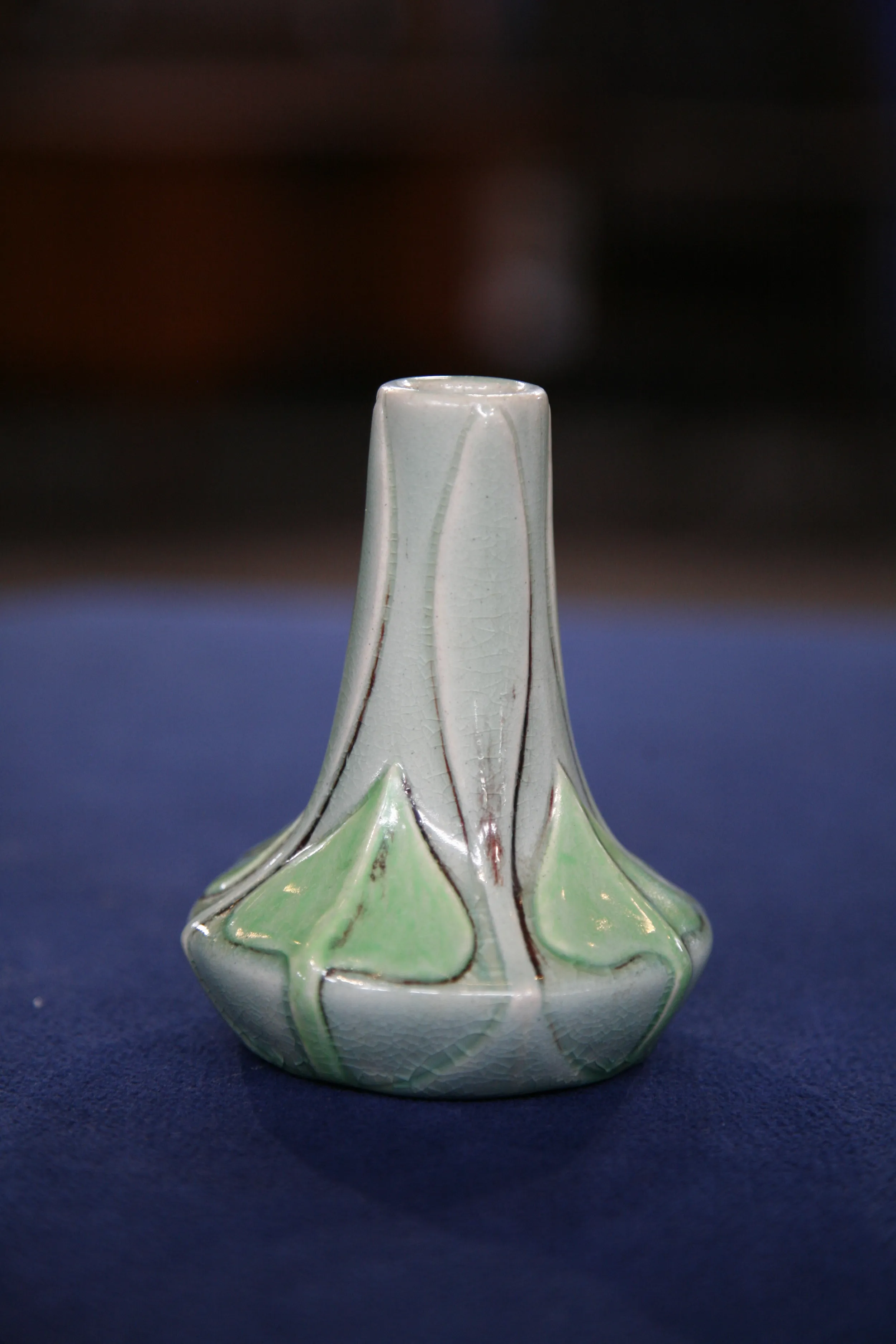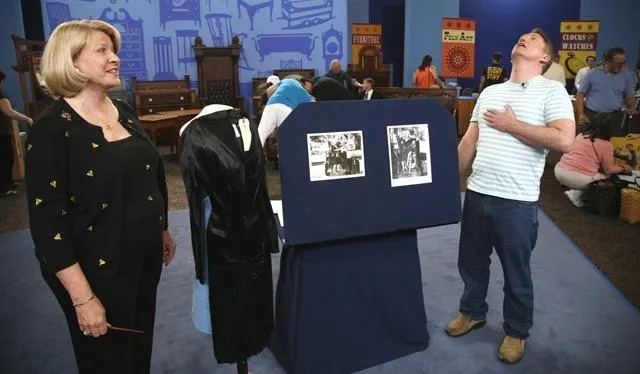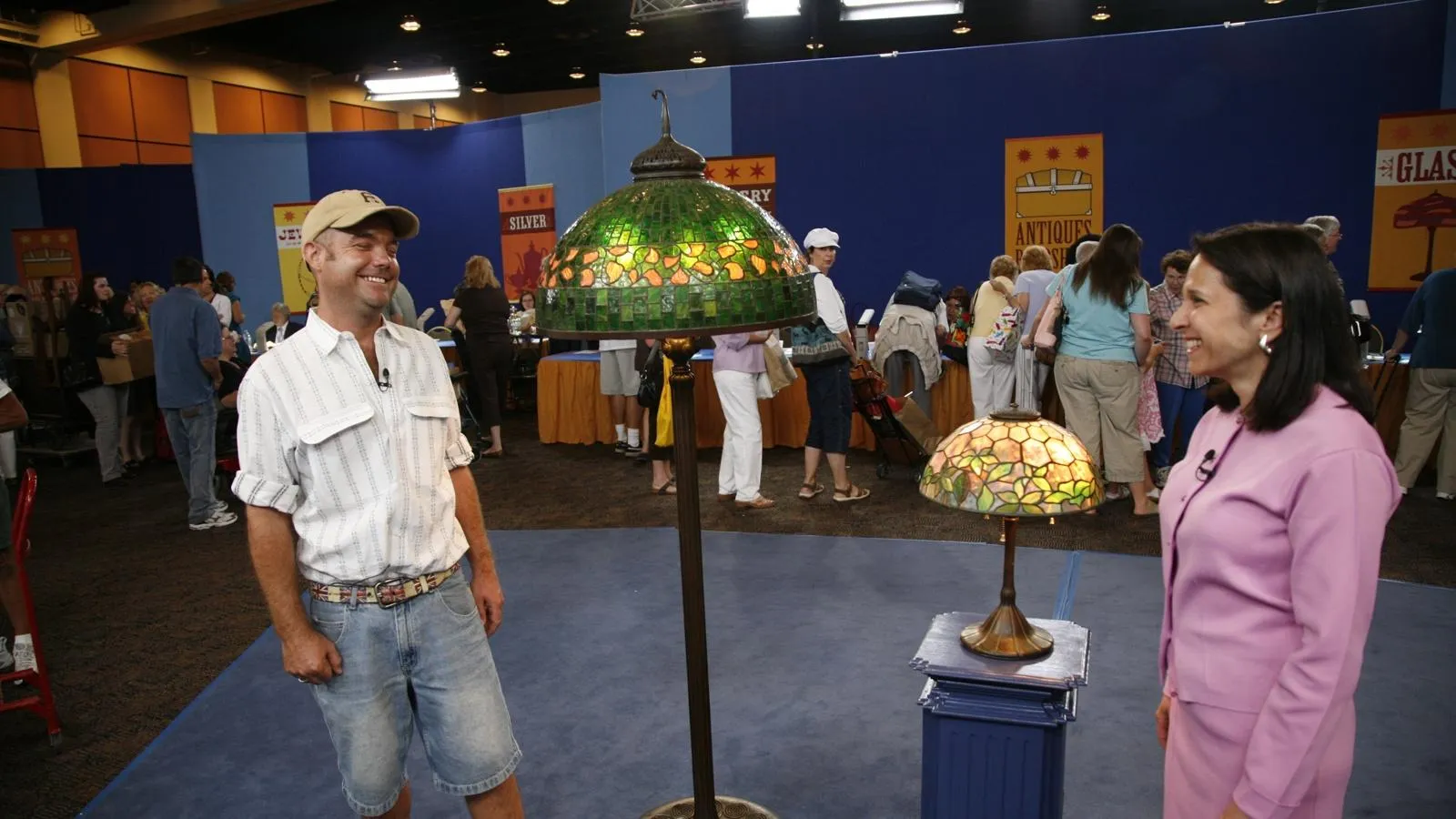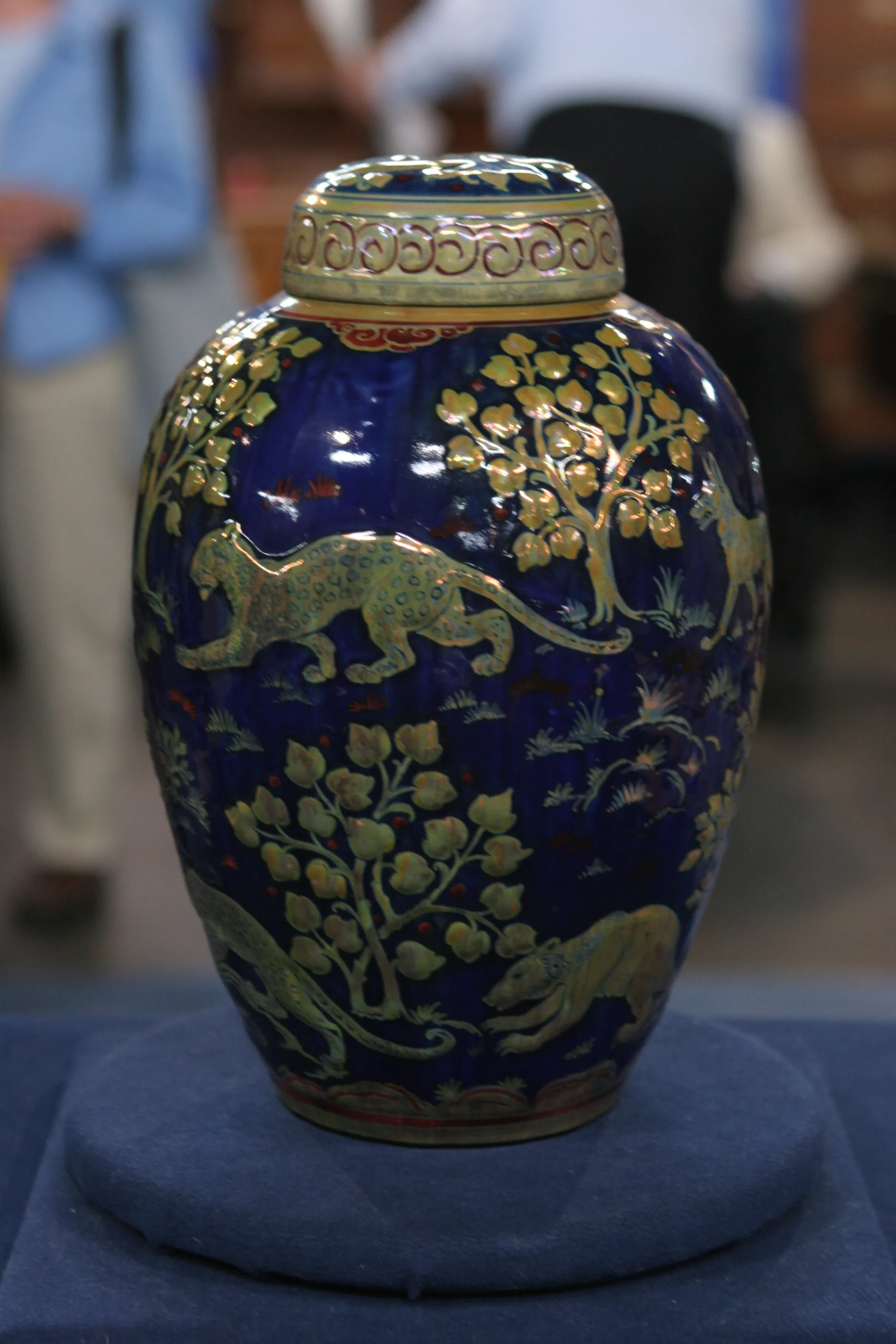GUEST: I first remember seeing them when I was about eight or ten years old. I was really intrigued by the woman across the top of the, the vase. It was very, very unique. My mother's grandmother lived next door to Harry Bangs, who was an assistant to Artus Van Briggle. And when a similar piece apparently won a prize in the Paris Art Show, Mr. Bangs was given this piece. Later on, his wife was going through having a child, and she passed away. And the grandmother took care of the child until relatives could step in, and in appreciation, she was given this piece. So it's been in the family since sometime in the early 1900s.
APPRAISER: That's great provenance, and they didn't just give you a couple of pieces, they gave you a couple of very special pieces. And let's start with this one first. It's a little piece of Van Briggle. It's a nice early one. It's got Van Briggle's mark on it, it's dated 1902, there are Roman numeral threes for the clay composition. The double-A mark is for Artus and Anna. They're molded pieces. This one's particularly special-- number one, while it's a molded piece, you can see that it's sharpened up after the mold. So this embossed detailing is very crisp. But on top of that, this glazing is really bright. This is sang de boeuf, or blood of ox, running through it. So in addition to having two distinctly different shades of green, there's some oxblood running through it, as well, too. This is a sweet little piece of Van Briggle. I mean, just a charming cabinet piece. This thing, this is as good as it gets, I mean...
GUEST: (laughs)
APPRAISER: Artus was dying of tuberculosis.
GUEST: Right.
APPRAISER: He was in love with his wife, Anna. This is a tribute piece. This piece is created out of his love for her. It's a, a woman in repose wrapped around the top of the pot. There's a, a certain sadness and a certain amount of resignation involved with, with designing and, and conceiving of this piece. And it's considered to be one of the standard-bearing pieces of American decorative ceramics from the Arts and Crafts, Art Nouveau period. They're still making this. That's how enduring the design is. But this 1902 version is the most mature version of his work. There are earlier ones which are germinal.
GUEST: Right.
APPRAISER: There are later ones which are interesting, but the 1902 Lorelei is the best interpretation of this design. On top of that, and this is what I really love about this piece, this is the glaze he was trying to achieve. The perfect dead-matte, spinach green finish.
GUEST: Great!
APPRAISER: And that's what this has. And I like the way that it flows unevenly around the side of the pot. Here's, by the way, as her leg comes down...
GUEST: Right.
APPRAISER: ...that's her heel sticking out of the piece.
GUEST: Right.
APPRAISER: It's an early version of the mold, so the design is very crisp, in addition to whatever sharpening he did afterwards. It's very clearly marked. Again, the double-A mark, 1902. This you might think is a damage, but really, it's a little stilt pull that's been ground down at the factory by Van Briggle. So both pieces flawless, both pieces exquisite. I'm so happy to see them.
GUEST: Mm!
APPRAISER: In terms of value, these have sold for about $2,500 at auction. I like this one better-- I would expect this to bring maybe double that, $4,000 to $5,000. I've seen one of the Lorelei of this quality, and it's got a big hairline crack running through it. This is probably the best Van Briggle Lorelei there is.
GUEST: Hm...
APPRAISER: In my opinion, this is worth, at auction, between $50,000 and $60,000.
GUEST: Hm. That's impressive. (laughs)
APPRAISER: Well, believe me, it's, uh, no small thing.
GUEST: We'll take care of it.
APPRAISER: Yeah, by all means, do.













